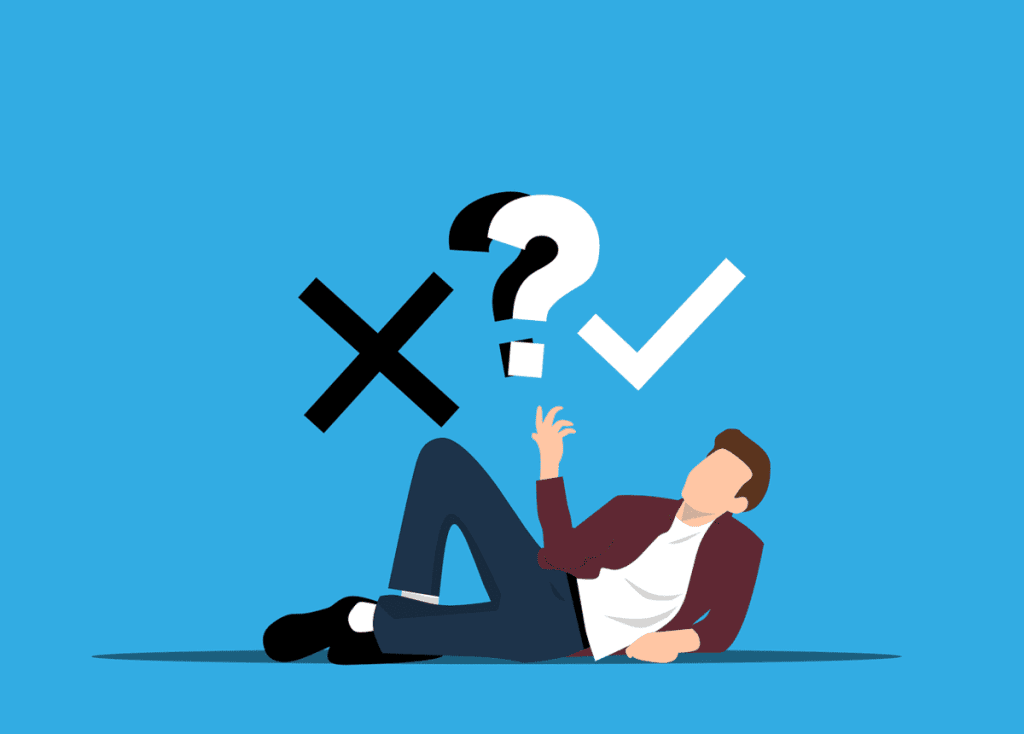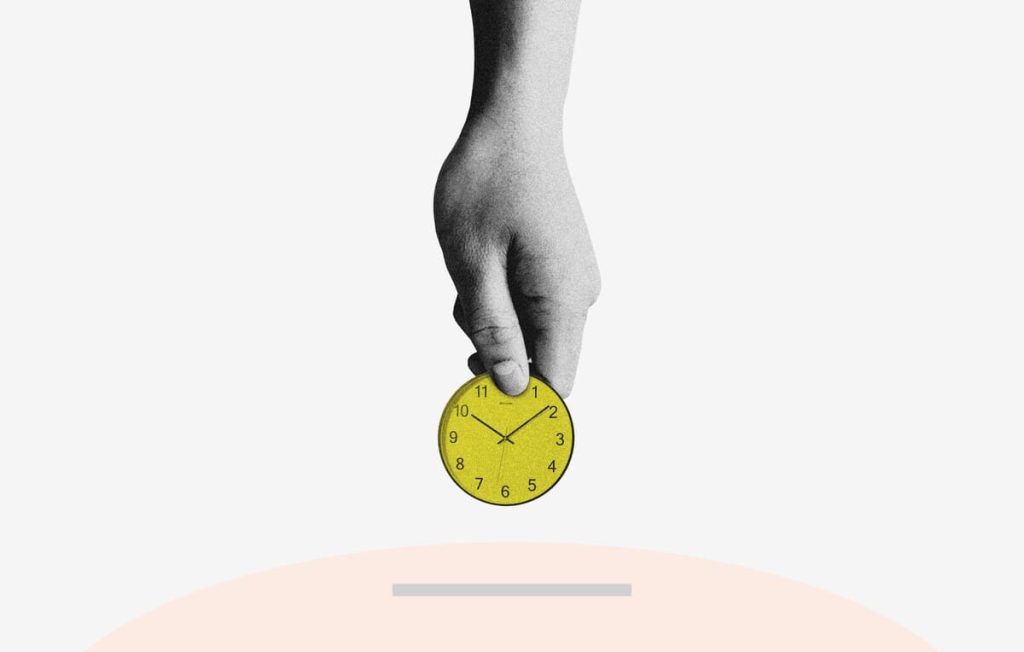Navigating your SaaS buyer’s journey has never been more essential since it’s crucial for not losing many ideal buyers. The best way to do this is via the most effective and suitable content type.
Why?
Because the goal isn’t to write content that addresses mass audiences and doesn’t really target anyone. The ultimate goal is to create content that targets precisely your target audience in the stage they are at the moment. Today, we’ll address the decision stage content and show you which content types are necessary to navigate your potential buyers to make a purchase.
Before we begin, let’s see what the decision stage is.
Table of Contents
What is the Decision Stage in the SaaS Buyer’s Journey?
The decision stage is where qualified leads determine to buy your SaaS services. The potential buyers in this stage already know their problems and possible solutions, so they are about to make the final decision and purchase.
They’ve considered all the options in the consideration stage and now seek information on why your SaaS brand is the perfect fit for their issues and needs. These potential buyers are most qualified since they deeply understand their problems and needs, are informed about possible solutions, and have a deep grasp of all available SaaS options.
It’s undeniable that content segmentation is crucial for your marketing funnel. Since we defined the decision stage in the SaaS buyer’s journey, let’s move on to your role and purpose in it.

What’s Your Role and Purpose in the Decision Stage in SaaS?
Your role in this stage is to help the buyer to definitely identify their needs, evaluate final purchasing options by providing any necessary information, and trigger the decision-making. In essence, you need to understand what views they might have before the final sales process starts so that you can handle them adequately.
You must have a unique selling point that gives value to the buyer and makes you stand out from your competitors. Therefore, it’s crucial to use the perfect decision stage content to convince them to finally buy your product or service.
Every stage of the SaaS buyer journey must have suitable tailored content, so let’s see the best content for SaaS buying decision.
Types of Decision Stage Content
SaaS SEO is crucial for the decision stage content because it’s the perfect stage to highlight the advantages of your SaaS services. Many companies make the mistake of targeting web pages and decision-stage ads to potential buyers who aren’t yet in this stage, which you must avoid. On the other hand, you also must understand the inbound marketing buyer journey SaaS to address everything correctly.
The following content types are perfect for the decision stage to trigger potential buyers to make the final step and purchase.
Comparison Pages As Decision Stage Content
One of the most effective SaaS SEO ways to convince the potential buyer in the decision stage to finally make a purchase is through comparison pages. The reason is that they are dedicated website pages that compare your SaaS services to the competitors and show them why your solution is much better.
You can also use comparison pages as decision stage content to showcase various packages and plans that are all from your SaaS company to show the prospective buyers which of your options is the best fit for their problems and needs.
For instance, you can compare your SaaS services vs. your competitor’s SaaS services and indicate why the potential buyer should choose you over the other option. Also, you can compare two of your SaaS services to help the potential buyer decide which option is better for their company. Another option is to use product video reviews to make a comparison and showcase why your service is better than others on the SaaS market.
Product Pages
Product pages contain essential information about your SaaS services in which your potential buyers are interested, including pricing, description, images, specifications, FAQS, etc. Therefore, it’s not surprising that this content type is crucial for the SaaS buyer decision making process.
A product page is highly important for potential buyers in the decision stage since it perfectly showcases every angle of your SaaS services and gives them all the necessary information they desperately need, ultimately triggering them to make the final step and purchase.
You must include each essential detail of the SaaS service, even if some feature doesn’t seem necessary. Don’t underestimate the power of every piece of information since any information that can make the prospect purchase is crucial.
In simple terms, the best way to ensure that your product pages are effective is to include the following information:
- How your SaaS service works
- How it was produced or created
- Best practices for using your SaaS service
Case Study Page
A case study is an essential decision stage content since it’s a method used to make your buyers gain a better understanding of your processes. Through the case study page, you will deliver in-depth research into a given subject to provide an understanding of its successes and functionalities for the prospective customer.
Furthermore, they will get a clear picture of the effectiveness of a particular SaaS service or tool, and it shows the measurable outcomes of your SaaS offer, which is crucial for the decision stage since they want to see precise results.
Exact numbers and measurable results from your work with previous customers are essential for convincing potential buyers in the decision stage since they’ll see the actual results other buyers get from using your SaaS services. In addition, it’s also excellent for your SaaS SEO because Google will realize you are a valuable source of information and a trustworthy SaaS company.
‘’Alternatives to’’ Page
An “alternatives to” page is similar to a comparison page; however, there’s a slight difference that’s crucial regarding this SaaS decision stage content.
If on the comparison page, you are comparing your company vs. competitors or two different of your SaaS services, on the “alternatives to” page, you are providing the potential buyer with alternative SaaS options to one famous option.
For instance, let’s say you are selling a project management tool such as Asana, and ClickUp is at the top of the industry. The goal is to make a list of “Alternatives to ClickUp,” in which you will subtly list Asana as the best alternative because it’s your SaaS product.
However, don’t make this decision stage content too promotional since a buyer that’s in this stage can’t be fooled with simple marketing tricks.
Use Case Page
Another type on this list of SaaS buyer journey decision stage content types is use case. A use case is a written description of how potential buyers if they purchase your SaaS product, will perform tasks on your site. The use case outlines the system’s behavior from the user’s viewpoint as it responds to a particular request.
Also, it can be a usage scenario for a SaaS piece, often used to suggest situations where the software piece may be helpful for them to see the practical usage of your service or product. In essence, it’s a methodology used in system analysis to identify, clarify and organize various system requirements.
Let’s give you a very simple example; for instance, imagine you are a cook whose goal is to prepare mussels in tomato and wine broth, a complex recipe. The use case needs to describe through a series of written steps how the cook would prepare that recipe.

Price Comparison Charts As Decision Stage Content
These charts are vital during the SaaS buyer’s decision-making stage since they give them a concise overview of the pricing options for your particular SaaS products or services you offer.
Price comparison charts give the buyers the chance to access the value proposition of various options and facilitate informed decision making by discovering potential cost savings and differences from your competitors. The charts can help potential buyers see the best deals, avoid overpaying, and make sure they get the most value for their money.
In addition, you also have the opportunity to reveal trends, such as promotional offers and seasonal discounts, which further triggers them in choosing you as the perfect solution to their needs and desires. These charts are excellent SaaS product comparison content regarding prices and showing you are better than anyone else.
While we are on the subject, let’s also see why it’s important to use promotional offers.
Promotional Offers
Promotional offers can play a key role as decision stage content since they can give consumers added incentives that can tip the balance in favor of making a purchase. You can include discounts, exclusive access and offers, limited-time deals, and other special offers to create a sense of urgency and perceived value to make your services much more attractive.
They also reduce the financial risk for the potential buyer, which means you will encourage the buyers to commit willingly. By highlighting the immediate benefits and improving the overall value and benefits, you will be able to efficiently address consumer hesitations and boost quicker and more confident purchasing decisions.
Interactive Elements (calculators, tools)
Interactive elements like interactive calculators and tools can be crucial as decision stage content since they provide real-time personalized data that helps individuals make choices.
These elements can simplify complex calculations, present immediate results, and allow potential buyers to explore various scenarios. These scenarios will enhance their understanding of potential real outcomes.
By offering insights and reducing uncertainty, interactive elements empower users to make data-driven decisions, ultimately improving efficiency in both personal and professional contexts.
Free Consultation and Free Trials
Last on the list of decision stage content types, but equally important is free consultation and free trials.
A free consultation can be a one-on-one meeting, conversation, or interview given for free to share one’s thoughts and discuss possible opportunities for collaboration.
Free trials are a chance to gather feedback from potential buyers regarding a new SaaS service you have on the global market. By offering a free trial sample, your potential buyers and even current ones can test and evaluate the offer, provide their input, and better understand its usage. Your potential buyers can explore your new SaaS service or product without any risk involved.
Both a free consultation and a free trial can be highly beneficial since it’s free and provide a chance to interact with the potential buyer in the decision stage to finally make a purchase since they see the actual value.
Final Words on Decision Stage Content
There you have it, the most suitable content types and best practices for SaaS SEO in decision stage content in your SaaS buyer’s journey.
It’s beneficial to use all or at least most of these content types to address every aspect of your potential buyer’s journey at the decision stage while nurturing and navigating SaaS buyers toward making a purchase.
Also, if you want to learn more about each stage, feel free to check our blog on awareness stage content!
FAQs
What questions to answer with your decision stage content?
You need to answer questions such as do you have detailed information about your service or product, what are the benefits of it, why it’s better than your competitors products, can you provide a free trial before purchasing, etc.
How to come up with ideas for decision stage content?
To come up with ideas for decision stage content you must know your prospects, pick your main keywords, use various content formats, and test which one brings the best results.